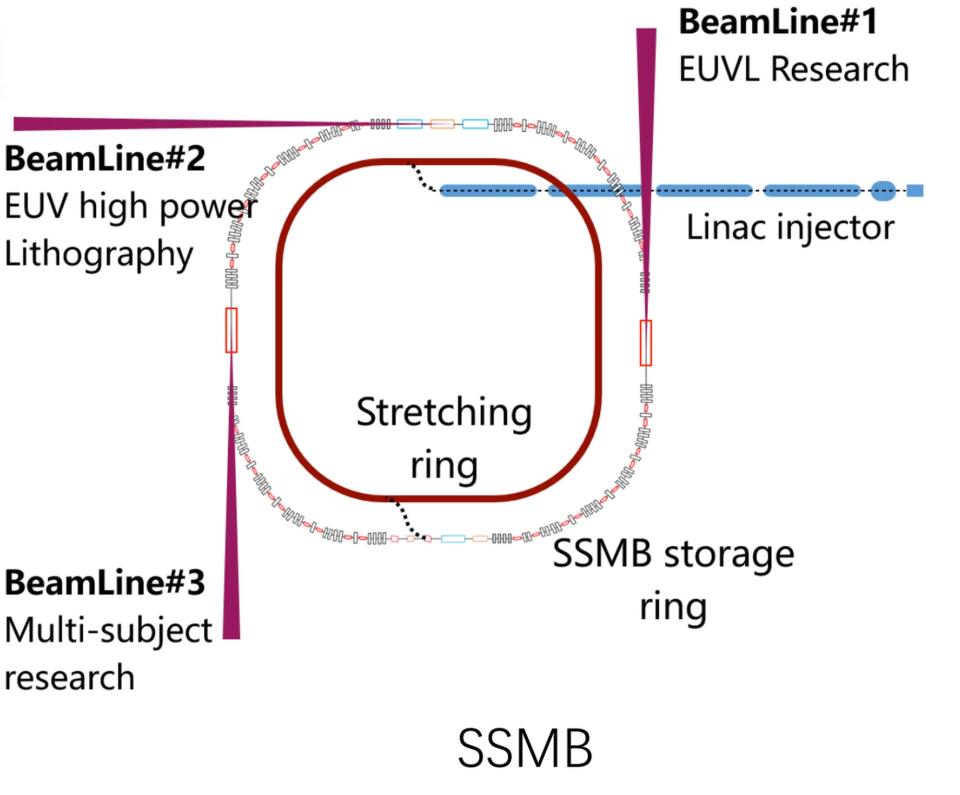China Aims to Use Particle Accelerators to Build Chips and Evade EUV Sanctions

According to the South China Morning Post (SCMP), China plans to use an innovative approach to manufacturing processors by harnessing particle accelerators, potentially positioning itself as a global leader in advanced chip manufacturing. SCMP says the method seeks to evade traditional lithography machine limitations and US sanctions on EUV technology, potentially reshaping the semiconductor industry landscape.
The Chinese research team, led by Tsinghua University, is developing a unique laser source using particle accelerators. Their goal is to sidestep the constraints of conventional lithography machines, which are pivotal in microchip production. The proposed particle accelerator will be roughly the size of two basketball courts, between 100-150 meters in circumference, and will serve as a high-quality light source for chip fabrication.
Professor Zhao Wu from Stanford University introduced the underlying technology, termed steady-state microbunching (SSMB). SSMB captures the energy emitted by charged particles during acceleration, transforming it into a continuous, pure EUV light source. Compared to the prevalent ASML EUV method, SSMB boasts superior power and efficiency, potentially reducing chip production costs.
"An SSMB-EUV light source has been designed at THU, with designed EUV power higher than 1kW, and some key technologies are nearly ready," said team member Professor Pan Zhilong at a presentation at an academic workshop in January 2022.

This ambitious project contrasts with the strategies of companies like ASML, which focus on miniaturizing chip-making machines. Instead, China's vision involves creating a giant factory that houses several lithography machines, all centered around a single accelerator. This design aims to enable competitive manufacturing processes (such as 2nm and beyond) that will be used to make high-performance chips without using traditional extreme ultraviolet (EUV) lithography scanners.
"As a completely new light source, the experimental verification of the technology has been implemented. But it is necessary to build a solid SSMB light source research device operating in the EUV band," said project leader Professor Tang Chuanxiang from Tsinghua University.
"Then we can [use the device to] cultivate scientific and industrial users, and polish the SSMB technology."
According to the report, Tsinghua University's team has made significant strides in this domain; they have successfully trialed the technology and are now scouting locations for the project's construction, the report claims. Their achievements could pave the way for China to bypass potential future sanctions and emerge as a semiconductor powerhouse.
However, the journey to realizing SSMB-based EUV lithography machines remains long and challenging. Professor Tang Chuanxiang heads the project and emphasizes the need for continuous innovation and collaboration across industries to develop a functional lithography system.
"There is still a long way to go before our independent development of EUV lithography machines, but SSMB-based EUV light sources give us an alternative to the sanctioned technology," said Tang. "It requires continuous technological innovation based on SSMB EUV light sources and cooperation with upstream and downstream industries to build a usable lithography system."

